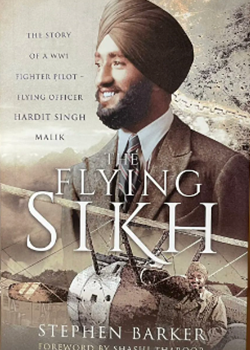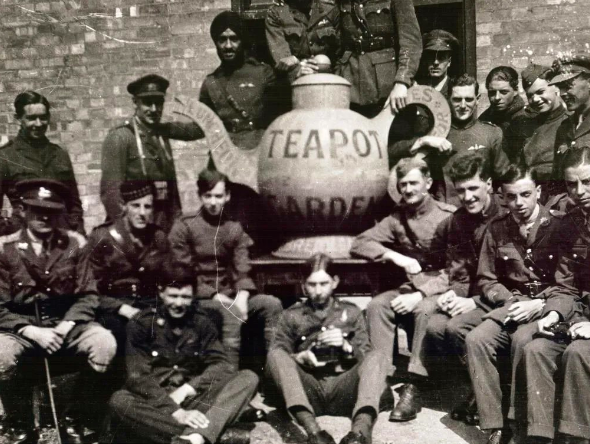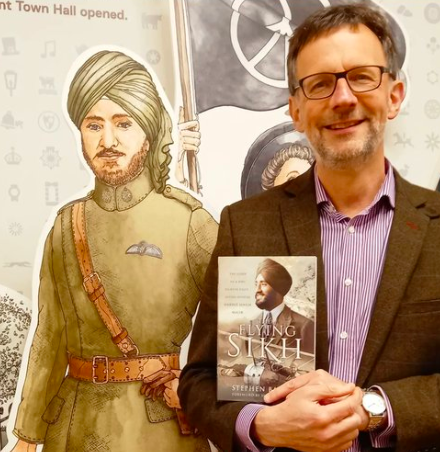The Flying Sikh The Story of a WW1 Fighter Pilot – Flying Officer Hardit Singh Malik by Stephen Barker
- Home
- World War I Book Reviews
- The Flying Sikh The Story of a WW1 Fighter Pilot – Flying Officer Hardit Singh Malik by Stephen Barker

Pen & Sword, 2022
£25.00hb, 224pp, including b&w images
ISBN: 9781399083294.
Flying Ace, first–class cricketer, golfer, civil servant, diplomat. Hardit Singh Malik was a man of many talents who lived an extraordinarily eventful and interesting life filled with adventure and camaraderie, nicely captured by Stephen Barker.
Not unusually for the sons of wealthy Indian subjects, Malik left the Punjab in 1909 aged 14 to be educated in Britain. Though he was accepted by many of his peers and tutors at both Eastbourne College and Balliol College, as an Indian in the Imperial metropole, he was an outsider, in some instances a curiosity, especially wearing the turban of his Sikh faith. Barker neatly captures the ‘othering’ of Malik.

Malik was playing cricket for Sussex when war broke out. After graduating from Oxford in 1915, he looked to join the Royal Flying Corps alongside many of his fellow graduates. Unlike his classmates, he was denied a commission in the RFC on account of his race. This is where Barker’s writing is strongest. The author provides clear context around the First World War, such as the arrival of the Indian Corps on the Western Front and their introduction to the fighting at the First Battle of Ypres whilst also explaining the political background in India. Malik joined the French Red Cross in 1916 as an ambulance driver before finally being permitted an honorary temporary commission in the RFC in April 1917.

Barker uses memoranda and private correspondence to paint a picture of the struggle to admit Malik and other Indian flyers into the RFC. It was a debate with much history and ran concurrent with the debate as to whether Indians could receive a king’s commission in the Indian army.
Much of the narrative is taken from Malik’s own book, regrettably never published outside of India. Barker adds to this, not only with the previously mentioned context, but also by fleshing out the characters who meet and form bonds with Malik, such as fellow RFC/RAF man ‘Jock’ Crichton, who was posted to 11 Squadron in October 1918 and became his observer.
After his training, which itself is covered in detail and of use to anyone looking to learn more about the basic training untaken by RFC pilots in 1917, Malik took to the skies in a Sopwith Camel, seeing action on both the Western and Italian Fronts. The accounts of these actions, including a ground attack against the infamous Red Baron’s aerodrome, are vividly written and supplemented not only with Malik’s own testimony but also of those who flew alongside him and opposed him.
Whilst the argument continued as to whether Malik could remain in the RAF after the conclusion of the Great War, the man himself had decided on a different path and joined the Indian Civil Service, his original career goal. His civilian life after India’s independence is not covered, which in some ways is a shame. Equally lamentable is the fact this book has been published by Air World, Pen & Swords’ niche aviation imprint. Given the experience of Malik as an Indian in both the metropole and the coloniser’s air force, this book is so much more than an aviation story and deserves to be promoted thoroughly and read widely. Hardit Singh Malik’s is an important story to tell.
Review by Adam Prime
This review first appeared in the October 2022 edition of our regular journal Stand To!





